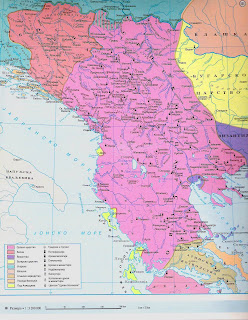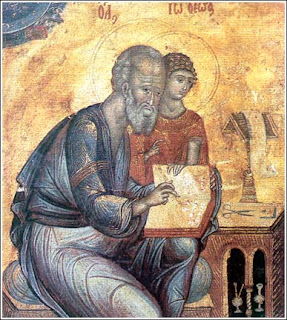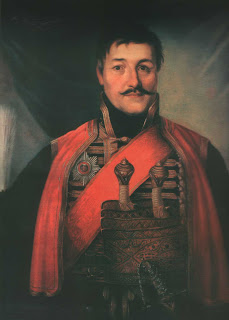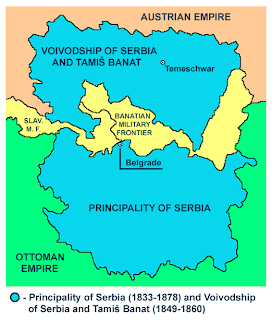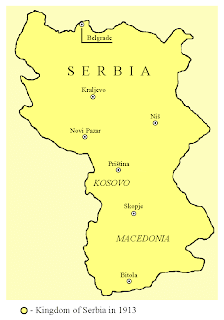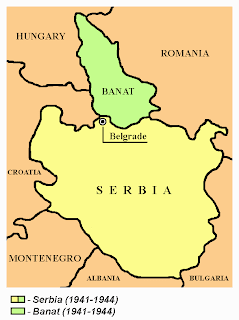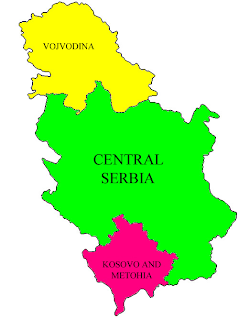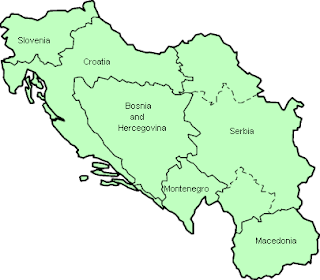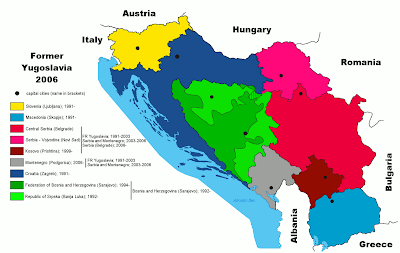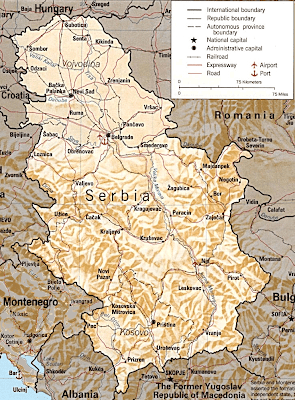First of all you should come when is EXIT (festival). the most popular festival in
Europe.And now something about EXIT
State of EXIT) is an annual summer music festival in Petrovaradin fortress of Novi Sad, Vojvodina, Serbia. It is staged annually since 2000 and usually lasts four days (since 2003).
Held in the picturesque setting of an eighteenth century fortress by the Danube, the festival quickly grew in stature and reputation. From its grass roots political beginnings, over to occasional problems with financing, and ending with wide praise it's lately receiving, EXIT tries to stick to its initial mission of providing relevant entertainment to Serbian youth while also bringing pertinent social topics to the forefront.
The festival was started by three University students from Novi Sad: Dušan Kovačević, Ivan Milivojev and Bojan Bošković. In 2000 and 2001 festival was organized through the Students' Union of Faculty of Technical Sciences and University of Novi Sad. In the meantime several NGO's and commercial companies have been involved into organization.
UK Festival Awards 2007, together with Yourope, the European Association of the 40 largest festivals in Europe, awarded EXIT as the Best European Festival. Public from all over the world voted for abouth a month, and among 10 festivals, EXIT won this award that is being awarded for the first time in categorie of the Best European Festival.
EXIT 00
The inaugural installment of EXIT was held over 100 days throughout the summer of 2000 on various stages set up between University of Novi Sad's Faculty of Philosophy building and the Danube's left bank. Initially the festival had a pronounced political component, representing, in effect, another form of anti-Milošević protest. Although, due to fear of regime repression, its activism was thinly veiled under the guise of merely getting the youth interested in political process, the festival's ties with Otpor and other forces pushing for the regime change were clear to all that attended.
Through multiple appearances by domestic bands like Darkwood Dub, Orthodox Celts, Eyesburn, Van Gogh, Atheist Rap, Deca loših muzičara, as well as a wide variety of art performances, the crowds were encouraged to get involved. The festival ended a couple of days before the, now historic, September 24, 2000 general federal elections, which ended up becoming the first step in the dictator's overthrow, in the sense that they provided the legal basis for Milošević's eventual forceful removal from power in the 5th October overthrow. The slogan of the festival was: "EXIT out of ten years of madness". And obvious reverence to the Milošević regime.
EXIT 01
After straightening out some issues with municipal authorities over the use of Petrovaradin fortress [1], EXIT crossed the Danube to move into the historic site. The 2001 festival (July 6 to July 14) was set as the celebration of Serbia finally being rid of Milošević, as well as of the country opening up to the world again after years of international isolation. This year's event also went under the name 'EXIT - Noise Summer Fest'.
In many ways EXIT became the new authorities' darling as different levels of government (municipal, provincial and republican) all made sure the event received plenty of funding. The presence of politicians was very heavy indeed - the festival was opened by Vojvodina provincial assembly president Nenad Čanak and Novi Sad mayor Borislav Novaković. Furthermore, in what was a truly bizarre sight, Minister of Finance Božidar Đelić and the National Bank governor Mlađan Dinkić performed a set of EKV covers before a raucous crowd. Still, not even the photo-op hungry politicians could take away from the tangible feeling of excitement. EXIT 01 was an overwhelming success.
It was cut down to the more focused and manageable nine days with foreign acts Finley Quaye, Banco de Gaia, Kosheen, Tony Allen, manCHILD, Maximum Roach, 4 Hero, etc. rocking the Main and DJ stages. Still, equally, if not more exciting for the Serbian crowds was an opportunity to again see the acts from other parts of ex-Yugoslavia like Darko Rundek, or KUD Idijoti that not too long before that started touring Serbia again after staying away for close to a decade.
This was also the year when the festival organizers started to carve out its musical profile. With the Main stage reserved for most commercially appealing acts (both foreign and domestic), they also introduced the DJ and Rock stages, clearly indicating the festival would be open to all kinds of music.
In addition to music, 2001 EXIT featured drama performances from different regional theatres, as well as workshops and socio-political roundtables discussing issues like reconciliation among the nations of former Yugoslavia.
EXIT 02
EXIT's 2002 edition (July 5 - July 13) was in many ways a repeat of the previous year, which noticeably clashed with the festival's new marketing mantra "Serbia, are you ready for the future?". Though it brought plenty of fresh DJ talents like David Morales, Darren Emerson, LTJ Bukem, Lottie, Marshall Jefferson, Erick Morillo, as well as Main stage acts like Asian Dub Foundation, Transglobal Underground, Smoke City, Blue States, etc., EXIT 02 featured too many of the already seen performers like Tony Allen, Manchild, Banco de Gaia, Darko Rundek, Roni Size, Van Gogh, and Love Hunters.
Even if attendance was impressive once again (more than 250,000 visitors over nine days), many among the crowds were somewhat disappointed by the absence of really big and relevant names. Additionally, the prevailing feeling was that nine days of non-stop festival performances inevitably water down its overall effect.
Immediately following the end of 2002 EXIT, the organizers announced a €300,000 loss for that year's event.
This led to criticism and allegations of financial mismanagement by the Democratic Party of Serbia's (DSS) Novi Sad branch. The party announced plans of pushing for the creation of special commission within the Novi Sad municipal assembly that would look into the festival's finances.[2]
EXIT 03
EXIT 03 was staged from July 3 to July 6, 2003. Organizers heeded the previous public advice by giving the festival a major organizational and conceptual makeover. It was shortened down to four days along with a new 'State of EXIT' marketing campaign. Additionally, they also did away with most of the non-musical content, marking the beginning of festival's commercial shift. This was visibly reflected in the aggressive advertising presence, of which the festival had been spared up to that point through generous government funding. Each of the seven stages had a separate sponsor, and the ticket prices went up.
Justifiably, the lineup was much more mass-audience friendly with acts like Rollins Band, Tricky, Moloko, Stereo MC's, Dirty Vegas, Chumbawamba, Soul II Soul, Shane MacGowan, Misty in Roots, Pete Tong, Tim Deluxe, Jeff Mills, Rambo Amadeus, Mizar along with old favorites Roni Size, Darren Emerson, Lottie, etc.
EXIT 04
The events leading up to EXIT 04 (July 1 - July 4, 2004) were almost as interesting as the 4-day happening itself. On June 7, three weeks before the festival's scheduled opening night, four of the organizers were arrested for embezzlement. The specific charge was "defrauding the organization of 12 million dinars (around US$160,000) by doctoring official financial papers".
Two of them, suspected of assisting, were released almost immediately, while Dušan Kovačević, EXIT society president and Bojan Bošković, EXIT general manager were assigned 30-day detention to prevent them from influencing potential witnesses since they were now suspected of failing to report the actual revenue from EXIT 03 ticket sales by writing up false invoices.
The remaining EXIT team fronted by spokesperson Aleksandra Kolar vehemently denied the charges, claiming the festival was the target of political persecution. The arrests were such a big story in Serbian press that even presidential candidates who were campaigning at the time, weighed in on the controversy.
On June 15, after examining seven witnesses that confirmed the earlier police statements by Kovačević and Bošković, the duo was released after seven days of prison detention.No charges were ever pressed.
So following a rough week during which it looked like the festival might even be cancelled for the year, the event was on again. The commercialization took further root with many more in-your-face sponsors and even the omnipresent MTV coming to Petrovaradin fortress for the first time to shoot a documentary on Novi Sad and the festival, as well as to publicize a human trafficking awareness campaign. The insatiable British music press also discovered the festival, resulting in some very affirmative reviews in NME and Mojo.
EXIT 04 instituted a Balkan Fusion stage for the variety of regional acts. The Main stage was reserved for headliners Massive Attack, Soulfly, Iggy and the Stooges, Cypress Hill as well as Brand New Heavies, Goldfrapp, The Wailers, Peaches, Rambo Amadeus, Partibrejkers, Darkwood Dub, Obojeni program, Adam Freeland, 4 Hero, Neneh Cherry, and especially reunited for-one-night-only 1980s Novi Sad favourites Luna.
The DJ stage featured some big names like Timo Maas, Sander Kleinenberg, Roger Sanchez, Howie B, X-Press 2, Ken Ishii, etc., while the aforementioned Balkan stage saw the return of new-look Kanda, Kodža i Nebojša after a 3-year absence, and a memorable set by perhaps the most unlikely EXIT participant ever - Zvonko Bogdan.
EXIT 05
In 2005 (July 7 to July 10), EXIT received a further media boost when BBC Radio 1 announced it would be covering the festival live. With a DJ crew of Annie Mac, Annie Nightingale, Gilles Peterson, and Fabio descending upon Novi Sad, British listeners as well as the BBC's worldwide audience were able to hear live broadcasts from the festival site. MTV also returned for the second year in a row.
In addition to great music, EXIT 05 featured a lot of 'politics' both in the lead up and during actual festival days. In many ways this was anticipated since in September 2004, Serbian Radical Party (SRS) candidate Maja Gojković got elected as mayor of Novi Sad. Seeing that EXIT has the reputation of an internationalist (some of its opponents would say pro-Western) gathering, many expected problems from a party like SRS which is staunchly nationalist and traditional. There was even talk of moving the festival to Belgrade. Many feared additional cutbacks and obstacles imposed by the Novi Sad city authority, especially when it comes to always contentious issues like municipal funding or fortress usage, but, perhaps surprisingly, no skullduggery occurred whatsoever. On the contrary, EXIT director Dušan Kovačević and mayor Maja Gojković even signed a 1-year 'cooperation protocol' in late March 2005, stipulating the city's financial commitment to the festival in the amount of thirteen million dinars (around US$155,000).
In a bizarre twist, this immediately drew ire from some leftist NGOs as well as left-wing politicians like, currently out of power, former president of Vojvodina provincial assembly Nenad Čanak who blasted the EXIT organizers for being "money hungry". He also added: "it's finally obvious EXIT is not a festival that promotes anti-war, anti-nationalist politics nor does it uphold democratic and European values" and even stated he's now sorry he took part in the festival's opening ceremonies back in 2001.
Kovačević rubbished such claims, while EXIT general manager Bojan Bošković objected to cameras and journalists being present at the protocol signing, which in his opinion gave SRS unwarranted free publicity.
There was no shortage of problems once the event started, either. A twenty seven year old festival goer was found dead in his tent at the EXIT temporary camp along Danube's right bank near the fortress. The cause of death was drug overdose.
Also, the organizers' idea to commemorate some painful events from recent Balkans' history didn't exactly go according to plan. Their initial intention was to dedicate a minute of silence to victims of Srebrenica Massacre at the stroke of midnight between the festival's last day and July 11 early morning - Srebrenica's tenth anniversary. However, after crowd commotion on one of the smaller stages during the Dubioza kolektiv set couple of days before, when this band consisting of Bosnian Muslims played a collage of Srebrenica-related soundbites by Serbian politicians on the screen behind them, provoking the mostly Serbian crowd into pelting the performers on stage with plastic water bottles, as well as continuous pressure from far-right SRS that objected to what it saw to be glorification of Bosnian Muslim victims of war over Bosnian Serb ones, the organizers scrapped the minute of silence fearing more crowd trouble. Instead, they announced plans to play the song 'I Saved the World Today' by Annie Lennox as a way to remember all victims with different video beams around the festival site showing a message of peace "Standing here ten years later, let's promise our children, our children's grandchildren as well as the children of our children's grandchildren that Srebrenica, Bratunac, Vukovar, Operation 'Storm', Ahmići, Đakovica, Staro Gacko will not be repeated. Never again!"
But even that plan was abandoned on suggestions from local police after few earlier bomb threats that turned out to be false. The final decision was left up to the festival organizers and they decided the possible threat of security trouble was just too big. This drew even more ire from left-wing circles of Serbian society that basically accused the organizers of completely selling out.
Afterwards, mayor Maja Gojković also revealed she received anonymous threats ordering her to "stay away from the fortress during the festival, or else".[12]
As for the music itself, the lineup was by far the strongest ever. With headliners Apocalyptica, Garbage, The White Stripes, and Fatboy Slim, hugely popular Ladytron, Slayer, Underworld, Ian Brown, The Datsuns, Carl Cox, Felix da Housecat, DJ Marky & DJ Patife, 2 Many DJs, Sasha, and regional favourites Edo Maajka, Disciplin A Kitschme, Laibach, etc., the crowds were treated to some truly diverse music. Unfortunately, the weather often didn't cooperate, twice forcing the festival to come to a complete stop due to torrential rain, but nothing could dampen the crowd's enthusiasm.
More than 150,000 people passed through the fortress' gates over four days. For the first time since its inception, EXIT saw a large foreign (outside of former Yugoslavia) presence. Over one thousand Britons attended, which was the result of extremely cheap admission tickets for an average Westerner as well as positive reviews the festival has been getting in British press.
EXIT 06
EXIT 06 took place July 6 - July 9, 2006.
The headliners on the main stage were Franz Ferdinand, Morrissey, Billy Idol, Pet Shop Boys, The Cardigans, The Cult, Dizzee Rascal, HIM and Scissor Sisters. Dance Arena performers included Dave Clarke, David Guetta, Derrick May, Eric Prydz, Hernan Cattaneo, James Zabiela, Jeff Mills, Junior Jack, Layo and Bushwacka, Nick Warren, Simian Mobile Disco and Steve Angello. Other artists that were playing on EXIT 06 are Suzanne Vega, Darkwood Dub, Siddharta, Eyesburn, Moonspell, Madball, The Beat Fleet, Dog Eat Dog, Partibrejkers, Obojeni program, and Rambo Amadeus. The festival was closed in total euphoria by Kiril Džajkovski.
EXIT 06 had 22 stages with more than 600 performers in total: Main Stage - the main festival ground; Dance Arena - former DJ Arena, the 2nd biggest stage reserved for electronic music; Fusion stage - stage reserved for performers coming from South-Eastern Europe; World Music stage - World and ethno music; Happynovisad stage - second-in-size electronic music stage; Hip-Hop stage - new stage as of 2006 reserved for hip-hop performers; Future Shock stage - unknown bands have a chance to get heard on this stage; Metal stage - metal, hard rock and punk stage with a capacity of 5,000; DJ Super Star stage; Café del Danube stage; Roots & Flowers stage; SUS stage; Elektrana stage; MTV Free Your Mind stage; Positive Vibration stage; Latino stage; Reggae stage and also smaller stages: Agora stage; Stripanziva stage; Cinema stage; VIP stage and Crossroad stage.
The festival saw a large foreign contingent, mostly from the UK, Ireland and Germany, accounting for 27% of the total visitors' number of over 150,000. The most attended performance was the one of Billy Idol with around 45,000 spectators according to the festival sources.
Visitors could watch the World Cup finals on big screens that were placed around the fortress.
In mid-April 2006, EXIT organizers signed a contract with mayor Maja Gojković stipulating terms of a 3-year cooperation commitment on the part of Novi Sad municipal government. Olli Rehn, EU Commissioner for Enlargement, visited the festival opening ceremony and he held a speech about European visas.
[edit] EXIT 07
EXIT 07 was held from July 12 to July 15, 2007. It was attended by 190,000 people, with more than half being foreigners. Most came away from the festival with positive opinions regarding the festival and Serbia. [1]
On November 9, 2006, EXIT organizers and Serbian Ministry of Finance signed a support protocol ensuring the Ministry's minimum commitment of 30 million dinars (around €380,000) in each of the next four years (2007 - 2010) towards the festival's annual operating costs.[13] Present at the public signing were the outgoing Minister of Finance Mlađan Dinkić, EXIT co-founder Bojan Bošković, as well as performers Rambo Amadeus and Obojeni program's frontman Kebra. Noticeably absent was the festival's other co-founder Dušan Kovačević.
On the same day it became known that Kovačević filed a lawsuit against Udruženje Exit as a whole, and specifically against its members Bojan Bošković, Ivan Milivojev and Vladan Joler, as well as Internet providers Neobee and Verat, naming them all as parties in the alleged illegal re-registration of exitfest.org, the Internet domain under Bošković's name. Kovačević accused Bošković of initiating this without his permission and is seeking RSD40 million in damages (around €500,000).[14]
In the meantime, Bošković and president of Vojvodina's government Bojan Pajtić signed a protocol about "Winter EXIT" series of club dates, which took place from January 5 until January 20 as a club tour of several Serbian acts throughout six cities in Vojvodina. For this project, the government spent about €50,000.[2]
On January 19, a well established production company 'Komuna' made a public offer to the EXIT team in regards to the festival's organizational and operating costs in the next five years but the offer was rejected.[3]
Performers on the Main Stage were (in order of appearance): Tanya Stephens, Robert Plant and Strange Sensation, The Prodigy, Groove Armada, Stanton Warriors and MC Wreck, Overflow, The Pipettes, Cansei de Ser Sexy, Beastie Boys, Zinc b2b Friction and Dynamite MC, Dubioza Kolektiv, Lauryn Hill, Basement Jaxx, Snoop Dogg, LTJ Bukem and MC Conrad, Mala Vita, Van Gogh, Audio Bullys, Wu-Tang Clan, Pendulum DJ set with MC Verse, and finally Tayo DJ Set
Performers on the Dance Arena were (in order of appearance): Marko Milosavljević, Deepchild, Trentemøller, Green Velvet, Richie Hawtin, Magda, Dee Face, Serge Santiago, 20:20 Soundsystem, Paul Woolford, Danny Tenaglia, Nick Fanciulli, Ivan Mastermix, Hannah Holland, Buraka Som Sistema, Frankie Knuckles, Roger Sanchez, Justin Martin, Noise Destruction, Dejan Milićević, Sebastien Leger, Blackstrobe, John Digweed, Eric Prydz, Marko Nastić.
WELL JUST LOOK AT THE NAMES OF ALL THIS MUSIC STARS AND YOU WILL NOW HOW GOOD IS AT EXIT
SO DO NOT THINK. I WANT TO SEE ALL OF YOU NEXT YEAR IN NOVI SAD. A LOT OF DRINK (BEAR) AND A LOT OF GOOD ELECTRO SOUND :))))))
AND NOW PICTURES FROM EXIT










MORE PICTURE YOU CAN FIND ON OFFICIAL EXTI WEB SITE
http://www.exitfest.org/
























